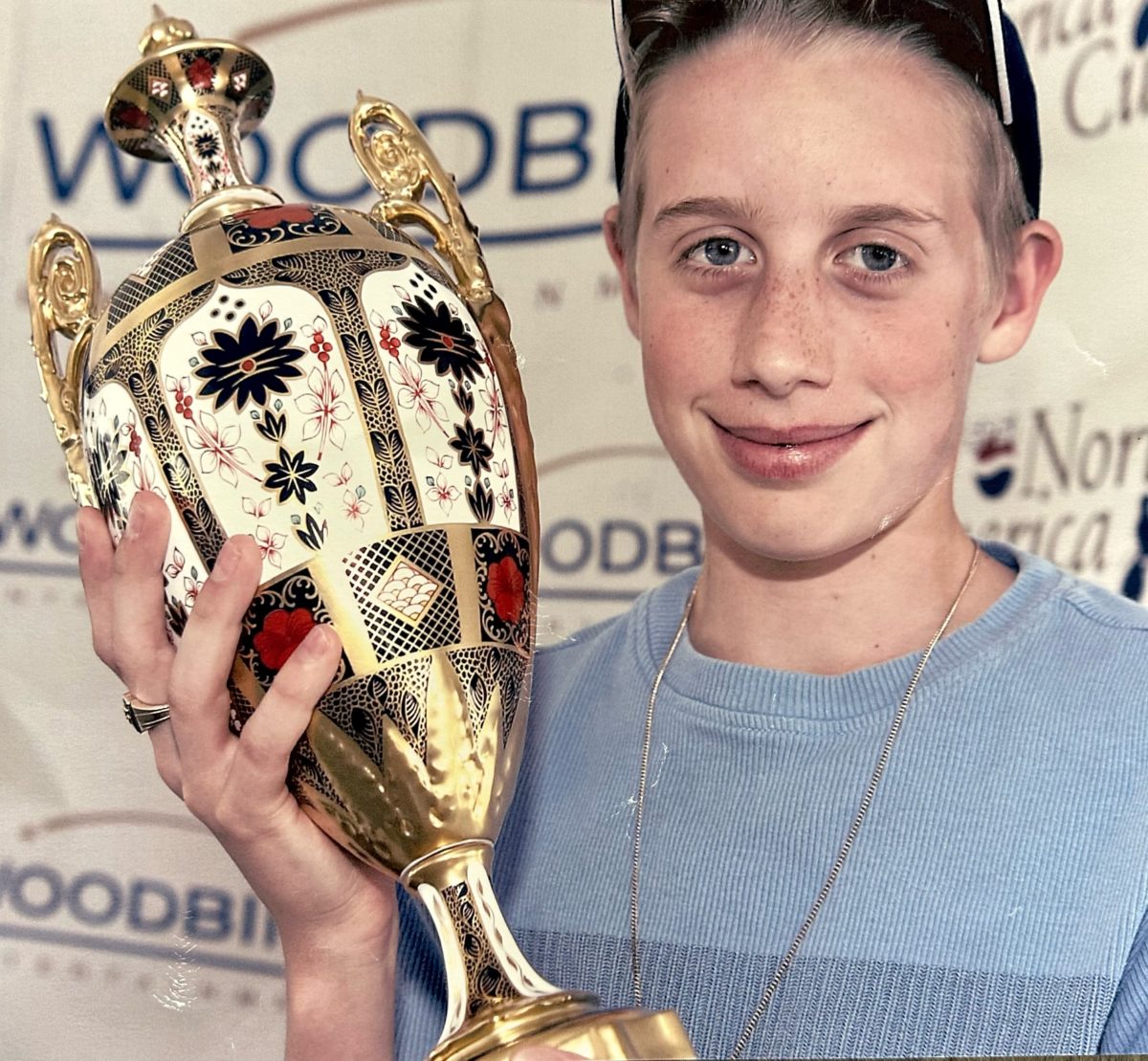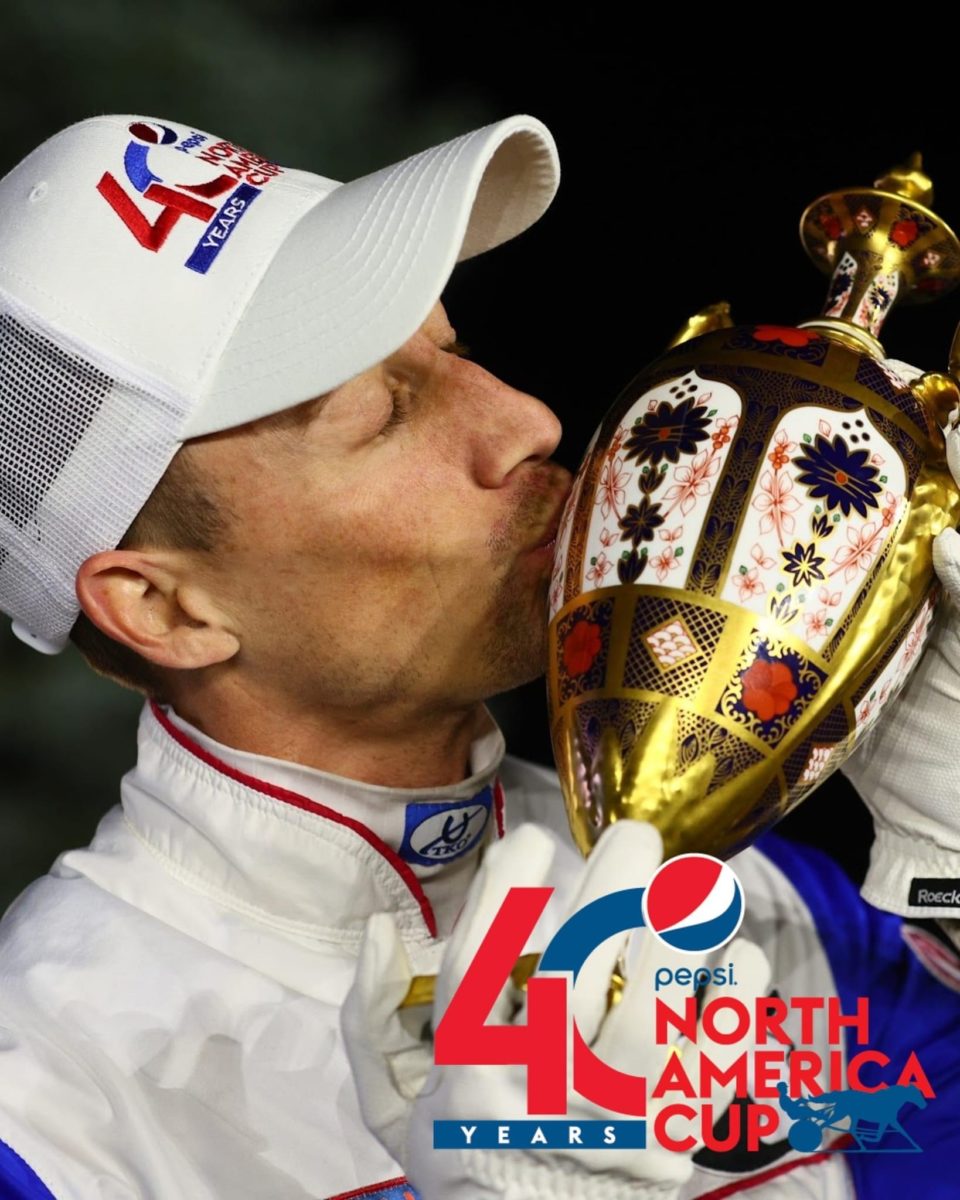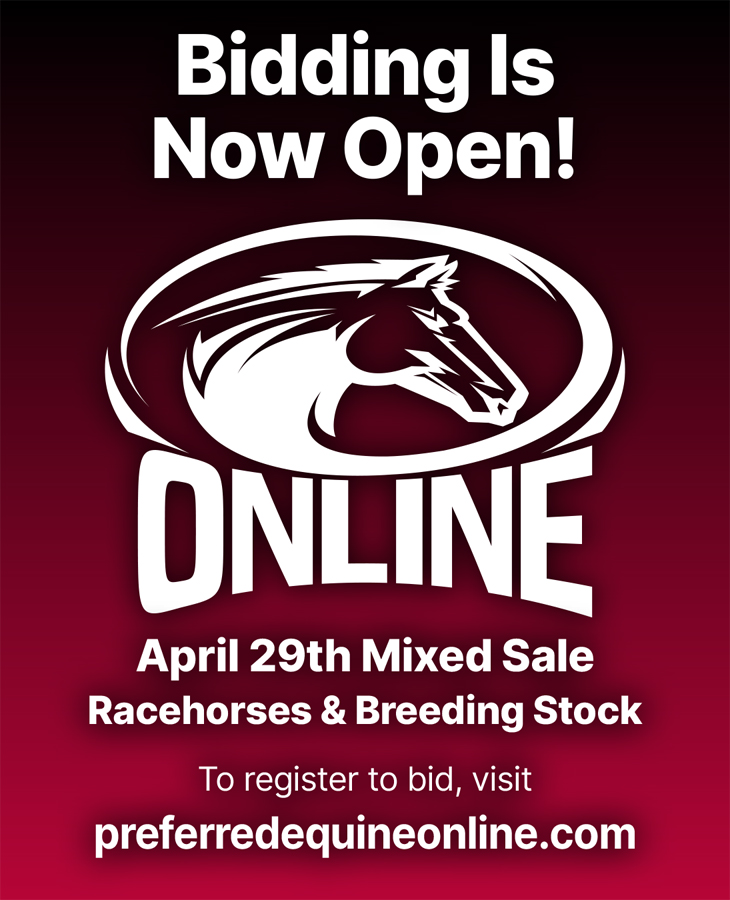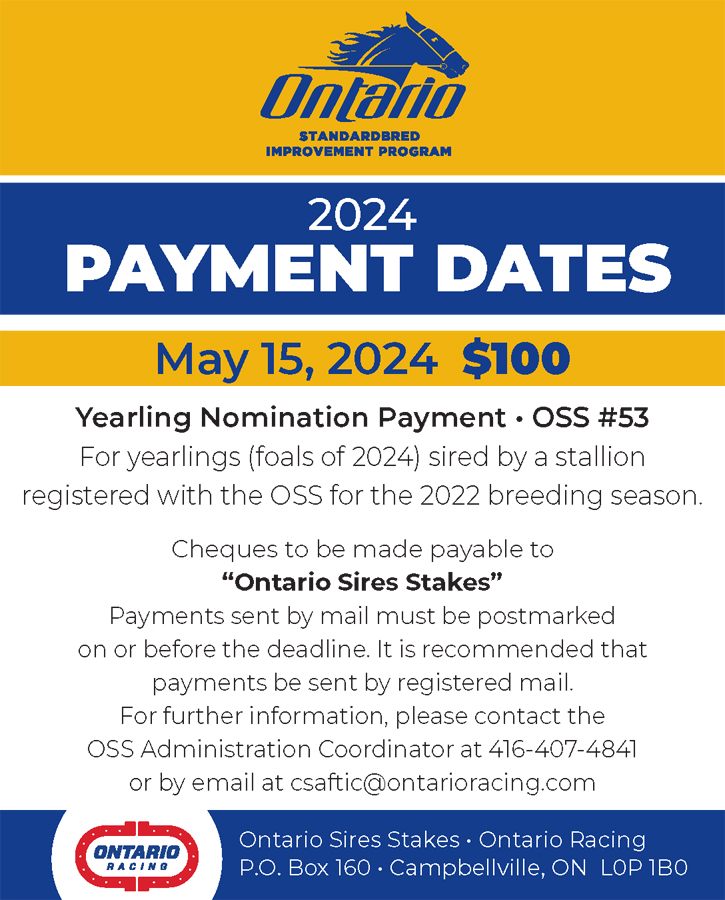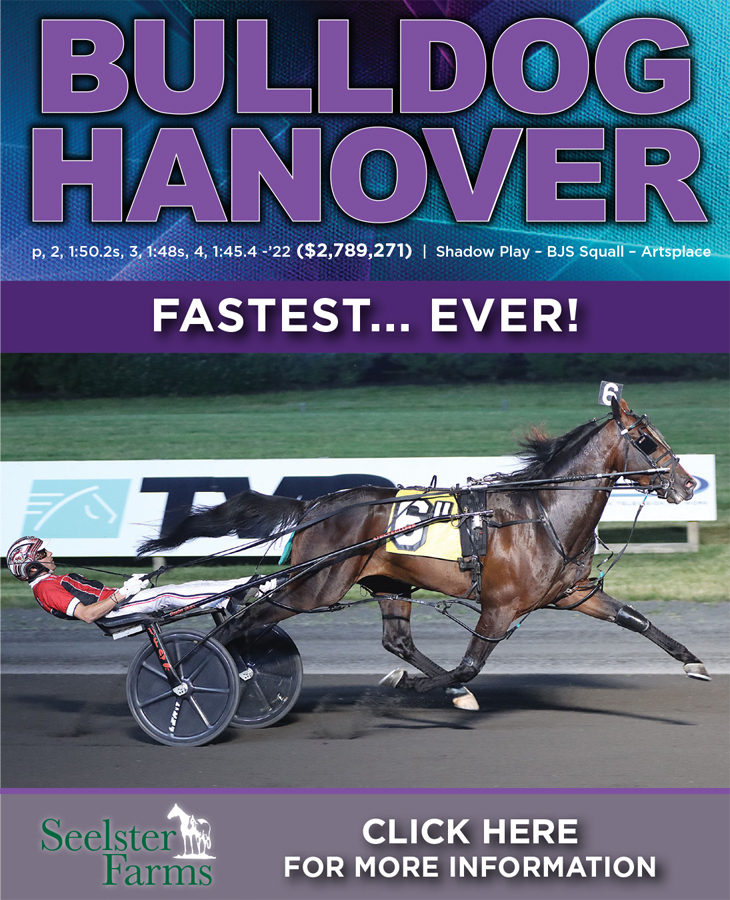

Scott Zeron is a success on and off the track thanks to mom and dad
by Murray Brown
Scott Zeron’s dad, Rick, helped him get started as a driver, while his mom, Joyce, made sure he always had something to fall back on.
“Scott was about 12 years old when he first told me he wanted to become a driver,” said Rick. “I believe I responded that I would do everything in my power to help him become the best he possibly could be.”
“My dad did exactly that,” said Scott. “In all the years I’ve been with him and around the horses, he has been nothing but a positive source. He not only has given me great opportunity, but his guidance and support is incomparable. To this day, he is a great teacher, my best friend and the biggest fan I have. He watches all my races. Every night on my way home from the races we talk and analyze the races; those that have taken place and those that are yet to come. He never criticizes me. I know I make mistakes; hopefully less and less as I grow older. It’s pretty great to have him and his vast experience from which to keep learning.”
At the age of 34, Scott has already accomplished what few other drivers have done in a lifetime in the sport. He has won two Hambletonians, two North America Cups, the Little Brown Jug, the Metro, innumerable major stakes wins, various Horse of the Year category winners and he’s just getting started.
According to USTA numbers you have driven the winners of over $94 million. As this is written there is a good chance that you will go over $100 million before the year is over. What got you to where you are?
“I’ve been around horses all my life. I would go to work with my dad when I was around five years old in Montreal. When I was around 12, I had decided that I wanted to become a driver. My mom thought differently, though. She wasn’t opposed to my being in the horse business, but she felt that it was of the utmost importance that I had a good education. I didn’t see anything wrong with that. I’ve always been fascinated with numbers. So, I studied and graduated with a diploma in accounting. I thought that being an accountant would be there for me if I needed it.
“I wanted to pursue a driving career first. I had somewhat of a late start at jogging and training horses because my father was stabled at a racetrack where you had to be 16 to be allowed on the track. At 18, I passed my driver’s test and dad sent me to some of the “B” tracks in Ontario to learn as he phrases it ‘how to drive a bad horse good.’ In my first start at Hanover Raceway, I drove a horse named Weird Albert for Victor Puddy who had a large stable. At the time, I weighed in at 119 pounds and had very little arm strength. That horse would have been very hard for a professional to drive; for me it was nearly impossible.
“I was able to keep it in a hole until the quarter pole. We ended up finishing fifth. Both of us were quite tired. My whole family was there. Dad was brimming with pride watching my first race. ‘How was it?’ he asked. I responded, ‘If that is what driving horses is like, I don’t want ever to drive one again.’ Thankfully I learned that not all horses are like that one. It also taught me the importance of physical conditioning. I have worked out regularly since.
“Fast forward, I became the dash winning driver in Canada in 2010. That gave me the confidence needed to move up to the WEG circuit. I gradually obtained some Grand Circuit drives from trainers like Casie Coleman and Tony O’Sullivan while there. One of them was with Michael’s Power who went on to win the Little Brown Jug and subsequently won the O’Brien Award for being Canada’s Horse of the Year.”
Then you came stateside. How did that evolve?
“I had my first U.S. drives for the Antonacci family while I was still living in Canada. Frank M. would put me down to race some of their young horses on both sides of the border. I have what I suppose is a well-earned reputation for being a conservative driver. That aligned with their methods. It has been a philosophy which has served me well, especially with young horses. The main reason for my heading south was the cancellation of [Ontario’s] Slots at Racetracks Program coupled with encouragement from Tony Alagna and Myron Bell giving me confidence to set up shop on the east coast.”
From there?
“Tony [Alagna] started using me as a driver regularly in my first year here. Tony and I hit it off with a bang with Artspeak in the Metro. Artspeak subsequently became the Dan Patch winning 2-Year-Old Pacing Colt of 2014. Tony and Myron have always been encouraging forces in my career.”
Of all the horses you have driven, which one has been your favorite?
“The favorite is also the best one. That undoubtedly is Atlanta. She showed talent at 2, but made breaks early on. You asked if I could foresee her becoming the great filly that she ultimately became. The answer to that would be an unequivocal, ‘No!’ How in the world could anybody have foreseen the greatness that was to come? She trained back extremely well at 3. Her first qualifier was quite impressive. From each and every start from then on, she made progress. Then at Vernon, she set the track record in winning the Empire Breeders Trot. At that point I began having visions of having a horse that could win the Oaks or maybe even the Hambletonian itself.
“I remember the conversation with my dad. ‘Dad, you finally have your Hambletonian horse! [His lifelong desire was to have a trotter good enough to race in the Hambletonian].’ I think dad may have misunderstood me, thinking I was referring to the Oaks and not the big one itself. He said, ‘The Oaks is on our schedule.’ ‘No,’ I responded, ‘Not the Oaks, the Hambletonian itself! I’ve been at The Meadowlands all summer. I’ve seen the colts she will be facing. She can beat them all.’ From that point forward the Hambletonian was our goal.
“In the elimination, I let the speed get away from me. My fractions were too quick and she got nipped at the end. She nevertheless came out of that heat just fine. I still felt she was the best horse going into the final. Dad told me that the last thing I said to him was, ‘I’ll see you in the winner’s circle.” Of course, it happened. Dreams sometimes do come true.”
Owner/breeder Richard Young has said that he has decided not to supplement It’s My Show to the Meadowlands Pace. What are your thoughts?
“He is almost certainly doing the right thing. If It’s My Show was still a stallion, I could see the motivation to supplement him to the race. But then again, if he were still a stallion, he would probably still be eligible to it with no need to supplement. The Meadowlands Pace is one of our great classic races. Of course, Linda Toscano and I would love to have one of the best horses racing in the Meadowlands Pace.
“In terms of what is best for the horse and the Youngs, Richard has made the right decision. If It’s My Show were still a stallion winning the race would certainly add to his resume when entering the stud. Richard Young is not your ordinary horse owner. Most owners would be upset at having a horse like It’s My Show not being a stallion. Richard thinks otherwise. He loves racing. He looks forward to seeing him race for years of enjoyment rather than losing him to the stallion ranks. I suppose it’s an example of differentiating between having one’s glass half full or half empty.”
What does the future hold for Scott Zeron?
“I hope to continue to capitalize on the great opportunities that I have been given. I will continue to work extremely hard. That is my number one plan. I hope to keep working with top quality horses. I hope to remain in the race bike and not become a guest announcer as I became last year at the Hambletonian.
“I’m looking forward to the Hambletonian and the Oaks, hopefully as a participant. I hope to continue being a part of It’s My Show’s career. If all continues well and we finish with a successful full season, my father, Megan and myself might head to Florida to train this winter in preparation for what will hopefully be another great season.








